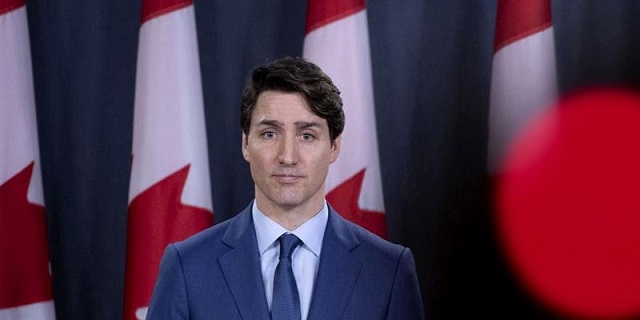Economy
Federal government should listen to Canadians and restrain spending in upcoming budget

From the Fraser Institute
By Grady Munro and Jake Fuss
The Trudeau government has repeatedly demonstrated a proclivity to increase spending and run deficits. Recent polling data shows that most Canadians are not in favour of this approach. When it tables its next budget on April 16, the government should listen to Canadians, restrain spending and provide a concrete plan to balance the budget.
The Trudeau government has increased spending substantially since taking office in 2015. When comparing the levels of inflation-adjusted, per-person program spending under every prime minister, Prime Minister Justin Trudeau has overseen the five-highest years of spending in the country’s history—even when COVID-related spending is excluded. Unsurprisingly, this proclivity to spend has resulted in eight consecutive deficits from 2015/16 to 2022/23, with another six planned from 2023/24 to 2028/29.
These eight years of borrowing have contributed to an $867.2 billion (or 82.0 per cent) increase in total gross government debt since 2014/15. Not only does this represent hundreds of billions that must be paid back by future generations, this debt run-up has also imposed significant costs on taxpayers through rising interest payments. In 2023/24, interest costs on federal government debt will reach a projected $46.5 billion—meaning more taxpayer dollars will go towards servicing debt than child-care benefits ($31.2 billion).
Again, while the Trudeau government was originally elected on the promise of higher spending for infrastructure and temporary deficits, recent polling data shows that Canadians are not happy with this approach—62.9 per cent of Canadians want the Trudeau government to cut spending. Conversely, less than a quarter (24.6 per cent) of respondents want the government to continue as planned (8.7 per cent want further increases in spending).
Of the respondents that feel the government should cut spending, 60.1 per cent want to use the savings to repay debt while 39.9 per cent want tax cuts. Debt reduction or tax relief would be a welcome development. But how much would the federal government need to cut spending to be in a position to balance the budget in the near future?
A recent study shows the federal government could simply limit the growth in annual program spending to 0.3 per cent for two years and balance the budget by 2026/27. In other words, the government could grow annual program spending by $2.9 billion from 2024/25 to 2026/27 and still balance the budget.
This is not to say the government wouldn’t face tough decisions in determining how to limit spending growth, and which areas of spending to target, but there’s a clear path to budget balance if the government wants to respect the wishes of most Canadians. And there are clear areas of spending where savings could be found.
For example, corporate welfare (i.e. government subsidies to businesses). Federal business subsidies nearly doubled from $6.5 billion in 2019 to $11.2 billion in 2022, yet research shows that they do little to promote economic growth and may actually harm the economy. Reducing or eliminating corporate welfare would help restrain overall spending.
After nearly a decade of growing spending and continuous deficits, Canadians have expressed a desire for the federal government to finally change its approach to fiscal policy. Through restrained spending there’s a clear path to a balanced budget that brings opportunities for debt reduction or tax relief—a path the Trudeau government can choose in its upcoming budget.
Authors:
Business
The great policy challenge for governments in Canada in 2026

From the Fraser Institute
According to a recent study, living standards in Canada have declined over the past five years. And the country’s economic growth has been “ugly.” Crucially, all 10 provinces are experiencing this economic stagnation—there are no exceptions to Canada’s “ugly” growth record. In 2026, reversing this trend should be the top priority for the Carney government and provincial governments across the country.
Indeed, demographic and economic data across the country tell a remarkably similar story over the past five years. While there has been some overall economic growth in almost every province, in many cases provincial populations, fuelled by record-high levels of immigration, have grown almost as quickly. Although the total amount of economic production and income has increased from coast to coast, there are more people to divide that income between. Therefore, after we account for inflation and population growth, the data show Canadians are not better off than they were before.
Let’s dive into the numbers (adjusted for inflation) for each province. In British Columbia, the economy has grown by 13.7 per cent over the past five years but the population has grown by 11.0 per cent, which means the vast majority of the increase in the size of the economy is likely due to population growth—not improvements in productivity or living standards. In fact, per-person GDP, a key indicator of living standards, averaged only 0.5 per cent per year over the last five years, which is a miserable result by historic standards.
A similar story holds in other provinces. Prince Edward Island, Nova Scotia, Quebec and Saskatchewan all experienced some economic growth over the past five years but their populations grew at almost exactly the same rate. As a result, living standards have barely budged. In the remaining provinces (Newfoundland and Labrador, New Brunswick, Ontario, Manitoba and Alberta), population growth has outstripped economic growth, which means that even though the economy grew, living standards actually declined.
This coast-to-coast stagnation of living standards is unique in Canadian history. Historically, there’s usually variation in economic performance across the country—when one region struggles, better performance elsewhere helps drive national economic growth. For example, in the early 2010s while the Ontario and Quebec economies recovered slowly from the 2008/09 recession, Alberta and other resource-rich provinces experienced much stronger growth. Over the past five years, however, there has not been a “good news” story anywhere in the country when it comes to per-person economic growth and living standards.
In reality, Canada’s recent record-high levels of immigration and population growth have helped mask the country’s economic weakness. With more people to buy and sell goods and services, the overall economy is growing but living standards have barely budged. To craft policies to help raise living standards for Canadian families, policymakers in Ottawa and every provincial capital should remove regulatory barriers, reduce taxes and responsibly manage government finances. This is the great policy challenge for governments across the country in 2026 and beyond.
Business
Dark clouds loom over Canada’s economy in 2026

From the Fraser Institute
The dawn of a new year is an opportune time to ponder the recent performance of Canada’s $3.4 trillion economy. And the overall picture is not exactly cheerful.
Since the start of 2025, our principal trading partner has been ruled by a president who seems determined to unravel the post-war global economic and security order that provided a stable and reassuring backdrop for smaller countries such as Canada. Whether the Canada-U.S.-Mexico trade agreement (that President Trump himself pushed for) will even survive is unclear, underscoring the uncertainty that continues to weigh on business investment in Canada.
At the same time, Europe—representing one-fifth of the global economy—remains sluggish, thanks to Russia’s relentless war of choice against Ukraine, high energy costs across much of the region, and the bloc’s waning competitiveness. The huge Chinese economy has also lost a step. None of this is good for Canada.
Yet despite a difficult external environment, Canada’s economy has been surprisingly resilient. Gross domestic product (GDP) is projected to grow by 1.7 per cent (after inflation) this year. The main reason is continued gains in consumer spending, which accounts for more than three-fifths of all economic activity. After stripping out inflation, money spent by Canadians on goods and services is set to climb by 2.2 per cent in 2025, matching last year’s pace. Solid consumer spending has helped offset the impact of dwindling exports, sluggish business investment and—since 2023—lacklustre housing markets.
Another reason why we have avoided a sharper economic downturn is that the Trump administration has, so far, exempted most of Canada’s southbound exports from the president’s tariff barrage. This has partially cushioned the decline in Canada’s exports—particularly outside of the steel, aluminum, lumber and auto sectors, where steep U.S. tariffs are in effect. While exports will be lower in 2025 than the year before, the fall is less dramatic than analysts expected 6 to 8 months ago.
Although Canada’s economy grew in 2025, the job market lost steam. Employment growth has softened and the unemployment rate has ticked higher—it’s on track to average almost 7 per cent this year, up from 5.4 per cent two years ago. Unemployment among young people has skyrocketed. With the economy showing little momentum, employment growth will remain muted next year.
Unfortunately, there’s nothing positive to report on the investment front. Adjusted for inflation, private-sector capital spending has been on a downward trajectory for the last decade—a long-term trend that can’t be explained by Trump’s tariffs. Canada has underperformed both the United States and several other advanced economies in the amount of investment per employee. The investment gap with the U.S. has widened steadily since 2014. This means Canadian workers have fewer and less up-to-date tools, equipment and technology to help them produce goods and services compared to their counterparts in the U.S. (and many other countries). As a result, productivity growth in Canada has been lackluster, narrowing the scope for wage increases.
Preliminary data indicate that both overall non-residential investment and business capital spending on machinery, equipment and advanced technology products will be down again in 2025. Getting clarity on the future of the Canada-U.S. trade relationship will be key to improving the business environment for private-sector investment. Tax and regulatory policy changes that make Canada a more attractive choice for companies looking to invest and grow are also necessary. This is where government policymakers should direct their attention in 2026.
-

 Opinion2 days ago
Opinion2 days agoHell freezes over, CTV’s fabrication of fake news and our 2026 forecast is still searching for sunshine
-

 Frontier Centre for Public Policy18 hours ago
Frontier Centre for Public Policy18 hours agoIs Canada still worth the sacrifice for immigrants?
-

 International9 hours ago
International9 hours agoPoilievre, Carney show support for Maduro capture as NDP’s interim leader denounces it
-

 International16 hours ago
International16 hours agoNetwork of Nonprofits with Marxist and CCP Ties, and Elected Socialists Race to Counter Washington’s Narrative of the Maduro Raid
-

 Entertainment5 hours ago
Entertainment5 hours agoNearly half of Netflix kids shows push LGBTQ content, watchdog warns
-

 Education16 hours ago
Education16 hours agoMother petitions Supreme Court after school hid daughter’s ‘gender transition’
-

 International5 hours ago
International5 hours agoWatch your a** Petro. Trump threatens Colombian President
-

 Environment16 hours ago
Environment16 hours agoLeft-wing terrorists sabotage German power plant, causing massive power outage










